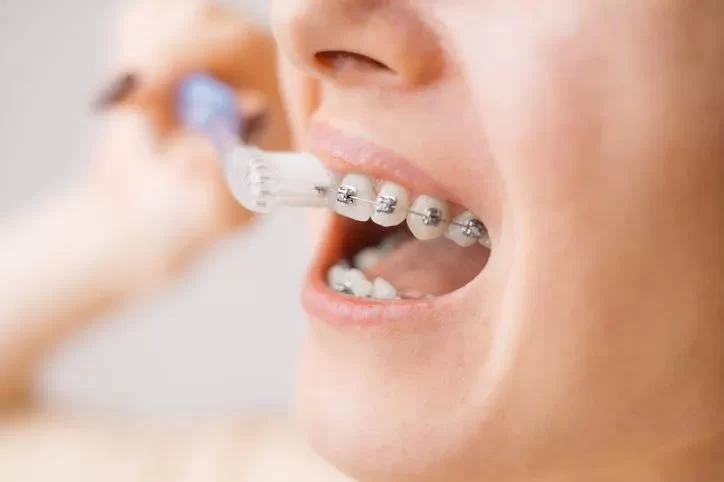
- Understanding Oral Pain from Braces
- Practical Strategies for Pain Management
- Common Causes and Preventive Measures
- Real-Life Experience and Professional Advice
- Recommended Products and Services
1. Understanding Oral Pain from Braces
Orthodontic braces are highly effective in aligning teeth and improving oral health, but one common challenge many patients face is oral pain during treatment. This discomfort usually arises from the pressure exerted by braces as they gradually move teeth into their proper positions. Understanding the nature of this pain is the first step toward effective management.
The sensation can range from mild soreness after an adjustment appointment to more persistent irritation caused by brackets rubbing against the inside of the cheeks or lips. This type of pain is typically a sign that your braces are working, but without proper care, it can interfere with everyday activities like eating and speaking.
1.1 How Pain Develops During Orthodontic Treatment
When braces apply pressure on teeth, the surrounding periodontal ligaments respond by remodeling, which causes inflammation and temporary soreness. Additionally, soft tissues in the mouth may become irritated by wires or brackets, especially when first fitted or after adjustments.
1.2 Differentiating Normal Discomfort from Problematic Pain
It’s important to distinguish normal orthodontic discomfort from pain signaling a potential issue, such as a broken wire or loose bracket. Normal soreness tends to subside within a few days after adjustments, whereas persistent or sharp pain may require professional evaluation.
2. Practical Strategies for Pain Management
Knowing how to manage oral pain from braces effectively can make a significant difference in the orthodontic experience. Several methods and remedies have proven useful for patients seeking relief.
2.1 Over-the-Counter Pain Relievers and Timing
Medications such as ibuprofen or acetaminophen are commonly recommended to reduce inflammation and alleviate soreness. Taking these medications about an hour before an orthodontic adjustment can help minimize post-adjustment pain.
2.2 Using Orthodontic Wax and Soothing Gels
Orthodontic wax is a simple yet effective solution to protect sensitive areas where brackets or wires irritate soft tissues. Applying wax over these spots creates a smooth barrier and reduces friction. Additionally, oral gels containing benzocaine can provide temporary numbing relief on sore areas.
2.3 Gentle Oral Care and Diet Adjustments
Maintaining gentle brushing and flossing habits during painful periods is essential to avoid worsening irritation. Soft-bristled toothbrushes and floss threaders designed for braces can enhance comfort. Meanwhile, opting for softer foods such as yogurt, mashed potatoes, and soups minimizes chewing discomfort and supports healing.
3. Common Causes and Preventive Measures
Identifying triggers of oral pain from braces helps patients avoid unnecessary discomfort and fosters smoother orthodontic treatment.
3.1 Causes of Braces-Related Pain
Typical causes include tight wires after adjustments, damaged or loose brackets, and irritation from sharp wire ends. Additionally, inadequate oral hygiene can lead to inflammation and gum tenderness, exacerbating pain.
3.2 Preventive Care to Reduce Pain Episodes
Regular visits to your orthodontist ensure timely adjustments and repairs, preventing painful issues from developing. Patients should communicate openly about any pain or discomfort to receive prompt professional advice. Consistent oral hygiene and avoiding hard, sticky, or chewy foods also play a crucial role in minimizing pain.
4. Real-Life Experience and Professional Advice
Consider the experience of Michael, a teenager who struggled with intense pain after his braces adjustments. His orthodontist recommended a combination of pre-emptive ibuprofen use, application of orthodontic wax, and a soft food diet during the first few days following adjustments. Michael found that this routine made a noticeable difference, allowing him to continue school and social activities comfortably.
Professionals stress that while braces pain can be frustrating, it is usually temporary and manageable. They emphasize the importance of patients’ active participation in their care by following prescribed pain management protocols and communicating openly with their dental team.
4.1 The Psychological Aspect of Pain Management
Dealing with oral pain also requires emotional resilience. Educating patients about the temporary nature of discomfort and setting realistic expectations helps reduce anxiety. Support from family, friends, and professionals can improve coping strategies, making the orthodontic journey more positive.
5. Recommended Products and Services
For anyone seeking reliable products or expert services to manage oral pain from braces, Dentistry Toothtruth offers an extensive range of carefully selected options. From orthodontic wax and soothing oral gels to professional consultations, their resources are designed to enhance comfort during treatment.
Investing in the right products tailored for braces care can significantly improve quality of life throughout orthodontic treatment. Professional guidance combined with effective self-care strategies ensures patients manage discomfort effectively and enjoy successful outcomes.







 Mortenson Family Dental4.0 (413 review)
Mortenson Family Dental4.0 (413 review) Nu Smile Aligner5.0 (1 review)
Nu Smile Aligner5.0 (1 review) GK Dental4.0 (175 review)
GK Dental4.0 (175 review) Carol A. Bahnemann, DDS5.0 (2 review)
Carol A. Bahnemann, DDS5.0 (2 review) Foothill Family Dentistry4.0 (41 review)
Foothill Family Dentistry4.0 (41 review) Corbin Dental at Oyster Bay4.0 (189 review)
Corbin Dental at Oyster Bay4.0 (189 review) The Importance of Oral Health Education During Pregnancy for a Healthy Pregnancy
The Importance of Oral Health Education During Pregnancy for a Healthy Pregnancy Best Tips for Brushing Your Teeth Properly for Healthy Gums: Essential Techniques for Oral Health
Best Tips for Brushing Your Teeth Properly for Healthy Gums: Essential Techniques for Oral Health Why Skipping Dental Checkups Can Lead to Bigger Oral Health Problems
Why Skipping Dental Checkups Can Lead to Bigger Oral Health Problems Advantages of Porcelain Dental Restorations
Advantages of Porcelain Dental Restorations How Can Diabetes Cause Tooth and Gum Problems? Preventing and Managing Oral Health Issues
How Can Diabetes Cause Tooth and Gum Problems? Preventing and Managing Oral Health Issues Healthy Habits for Promoting Good Oral Health and Hygiene: Tips for a Healthy Smile
Healthy Habits for Promoting Good Oral Health and Hygiene: Tips for a Healthy Smile